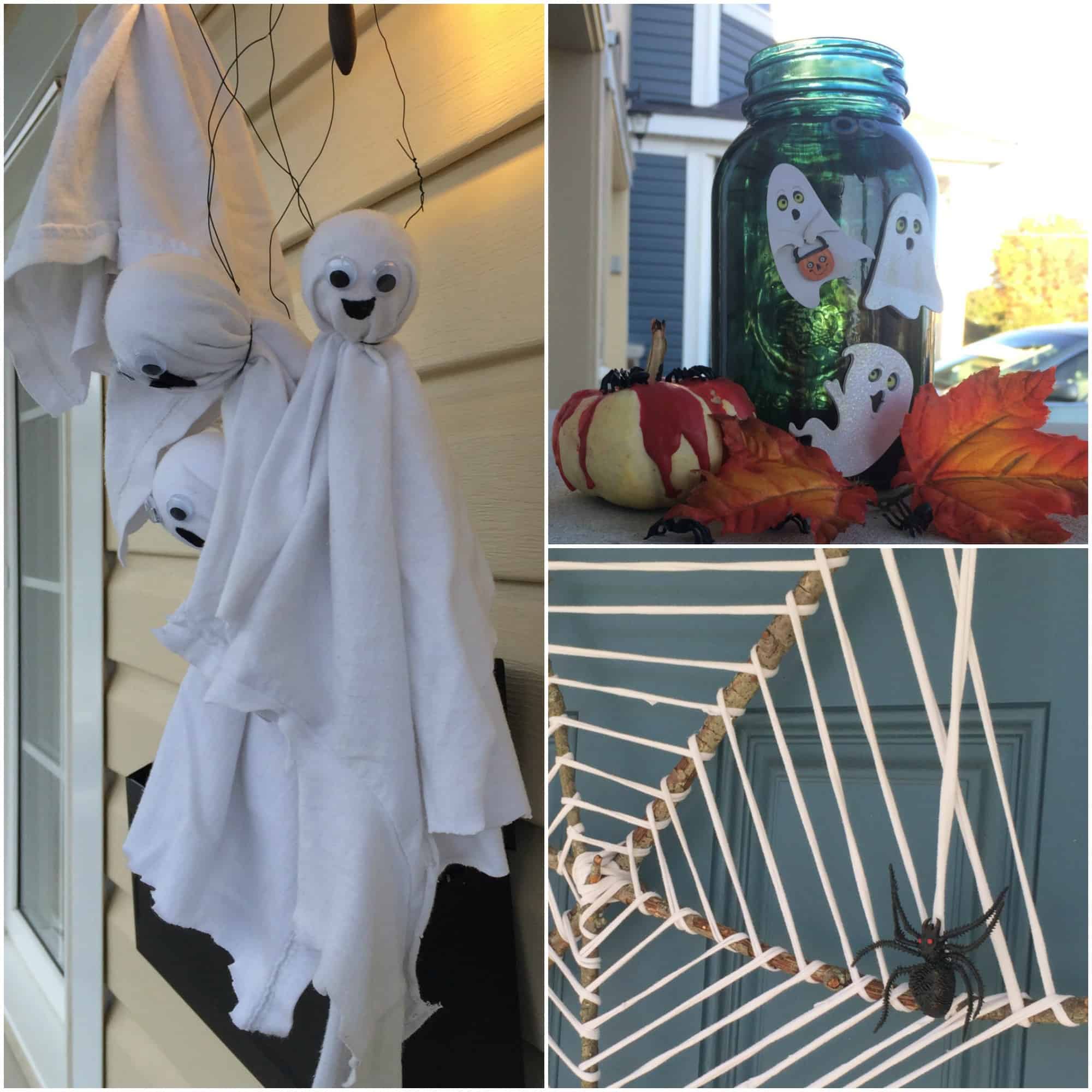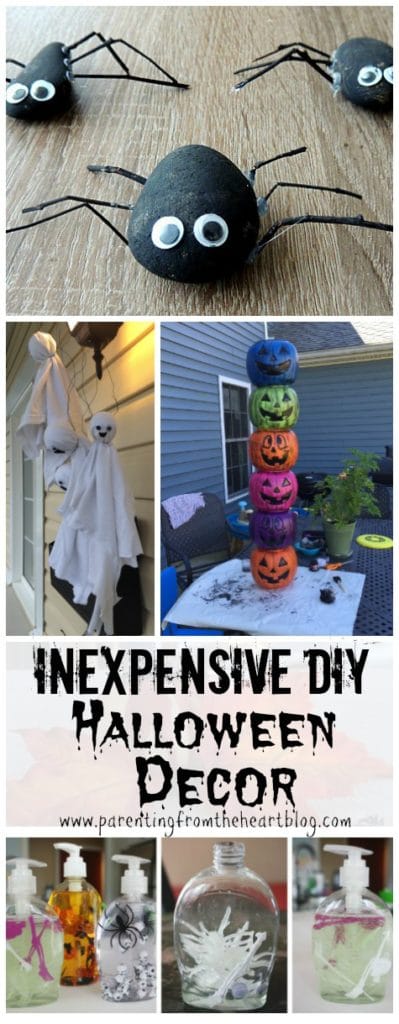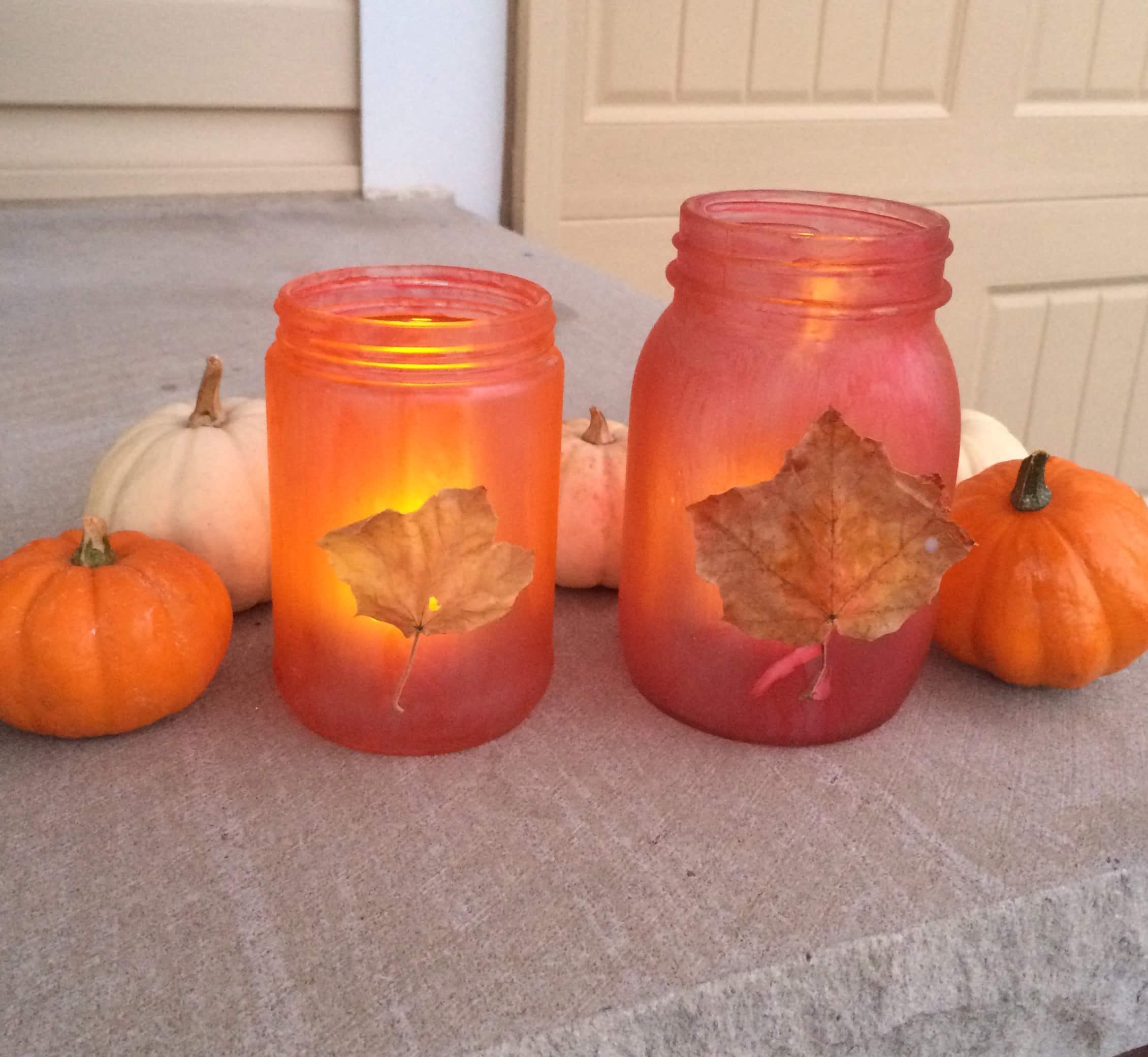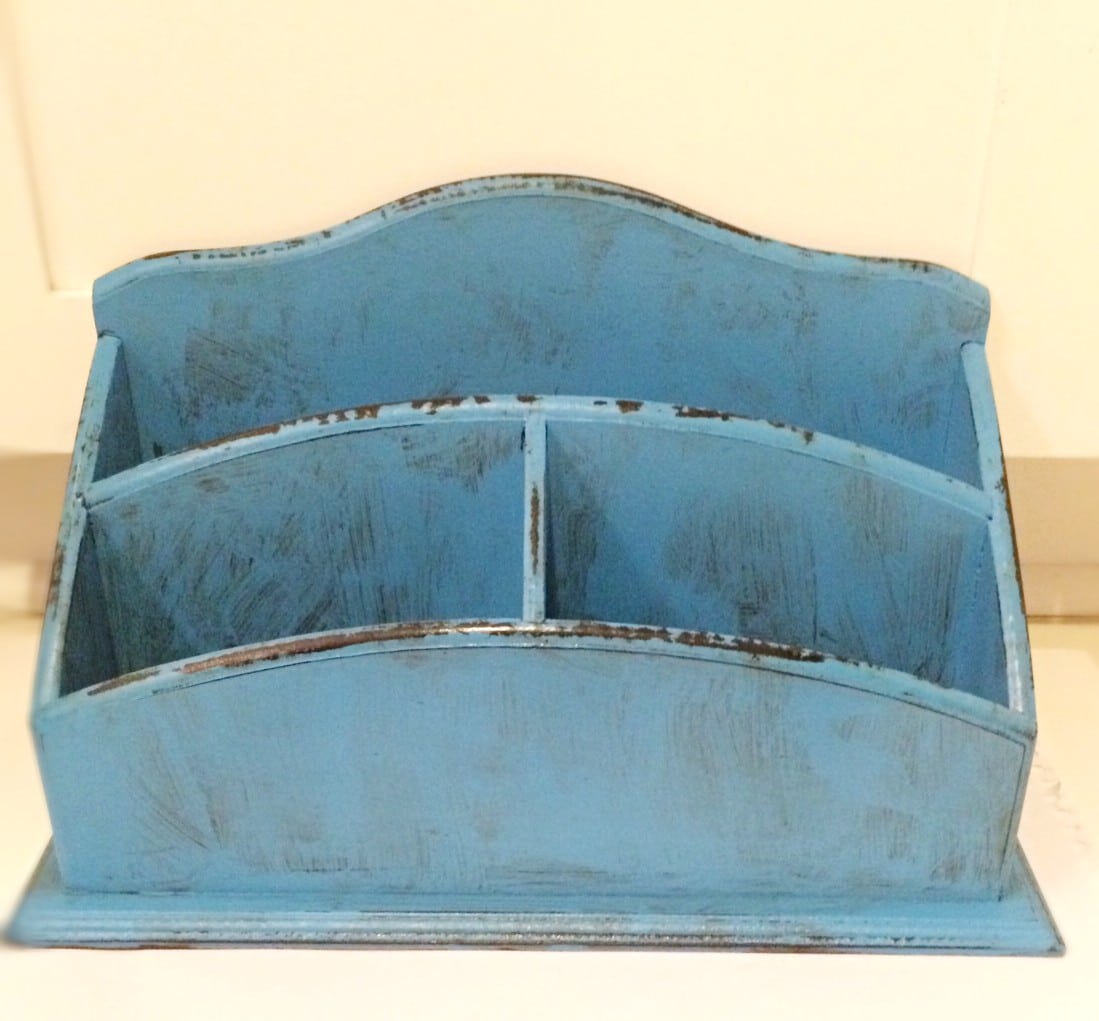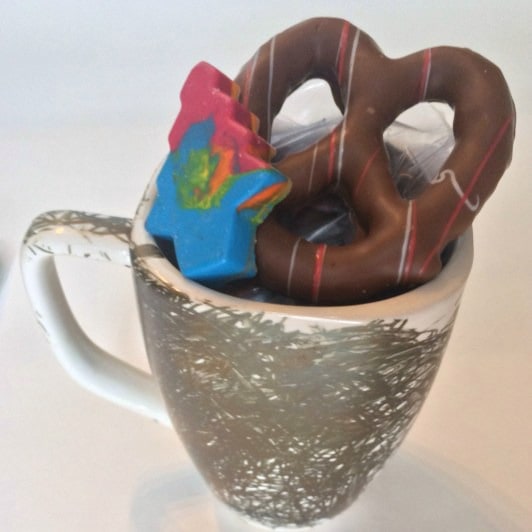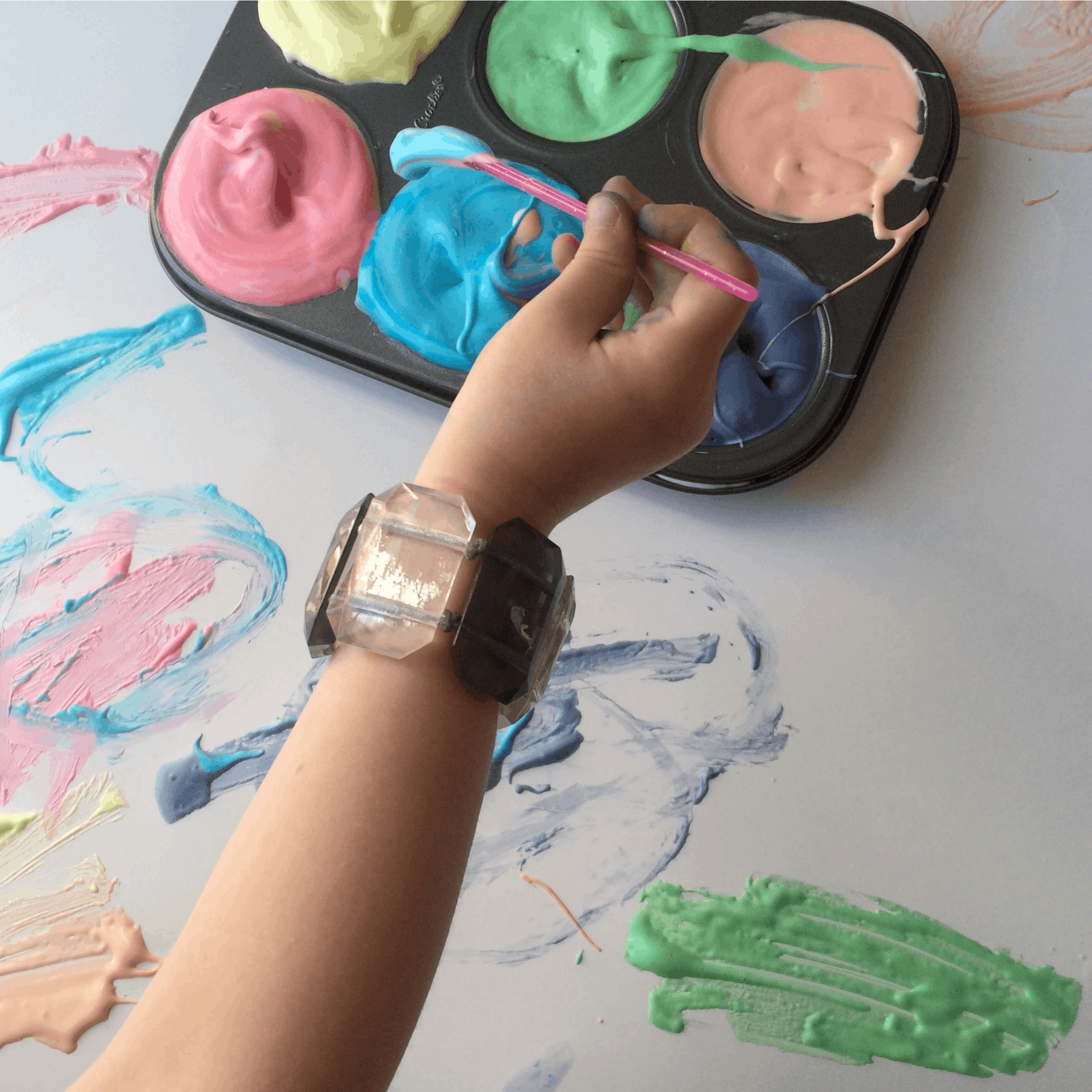When it comes to any Holiday, I’m primed to deck the halls. Sure, I like to buy a thing or two. Making all sorts of cool decorations is right up my alley. No matter what the occasion, I want to spend as little as humanly possible. Fall in the air (more or less) and Halloween is this month. So suffice it to say, I’m rarin’ to craft away! The kids and I slowly cutting, gluing, tying together and painting our ideas. And as we do so, I realize how many benefits there are in making your own DIY Halloween decor. For one, it’s inexpensive. It engages the kids and allows their imaginations to come to life. DIYing eliminates shopping through the scary aisles. My son is very sensitive and needs to avoid “scary guys” and “scary stuff.” Making these crafts require hand-eye coordination, fine motor skills, and focus. Additionally, they learn cause and effect, how to mix colours and so many more important skills! Seriously, inexpensive DIY Halloween decor is the way to go! Because two (or three or four) heads are better than one, I asked my friends to help contribute to this piece so you would be able to find all sorts of inexpensive, fun, and easy DIY Halloween decor ideas in one place. I hope you enjoy!
Inexpensive, Fun, Easy DIY Halloween Decor Ideas
from me and my friends!
Hanging Ghosts
What you need
- An old beat up white shirt
- Twine or string
- Foam white balls or plastic golf balls
- Googly eyes
- A black sharpie
- Hot glue gun
What to do
Cut t-shirt into squares. Jagged edges actually make the ghost look better! Place one ball right in the middle of the square. Gather the corners of the t-shirt together. Twist the shirt around the ball. Take a large amount of twine (about a foot and a half will do well). Secure the twine around the ball (or neck of the ghost). Using the hot glue gun attach eyes to the head of the ghost. Then draw the mouth of your choice!
Weathered Pumpkin Totem Poles
Click image to pin from Twitchetts blog
What you need
- Cheap plastic pumpkins
- Black ink
- Click here to read the rest of the ingredients and instructions
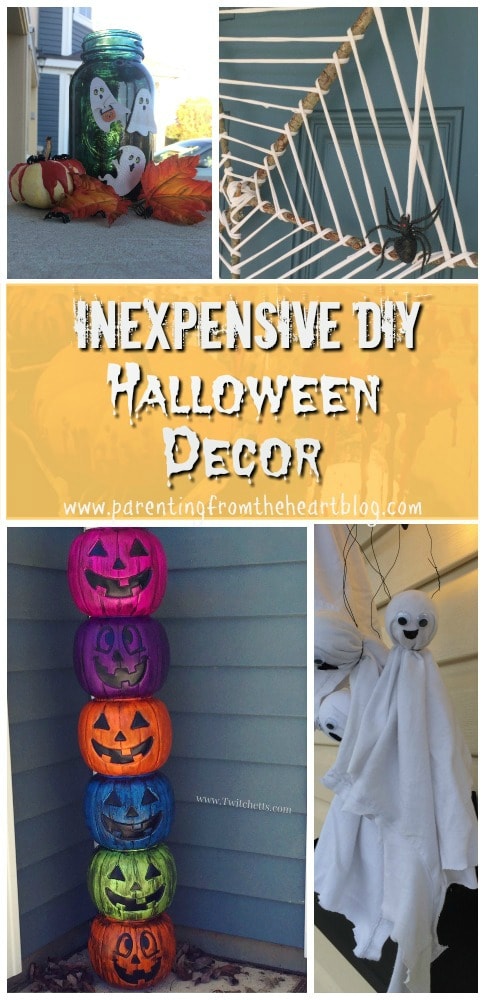
Easy Stone Spiders
What you need
- Stones
- Black paint acrylic if you don’t want it to wash away, tempera if you do
- Googly eyes
- Click here to read the rest of the ingredients and instructions
[bctt tweet=”Check out these simple #DIY #Halloween decor ideas! They cost next-to-nothing too.” username=”parentfromheart”]
Mason Jar Halloween Lanterns
What you need
- Mason jars
- Elmer’s glue
- Food colouring
- Paint brushes
- Halloween stickers
- Flameless tea light
What to do
Mix Elmer’s glue with food colouring. Then paint jars. Add spooky decals or stickers. Then add a flameless tea light.
Bloody Pumpkins and Mason Jars
Click the image to pin from Twitchetts
What you need
- Pumpkins
- Hot glue gun
- Mason jars
- Crayons
- Hair dryer
To read how to, click here.
More Inexpensive DIY Halloween Ideas
- Simple Cardboard Spinning Ghosts
- Halloween Hand Soap
- Mason Jar Lid Spiders
- Upcycled Spider Wreath
- Frankenstein Wreath
For even more awesome DIY Halloween ideas, check out my board on Pinterest! Don’t forget to follow me.







